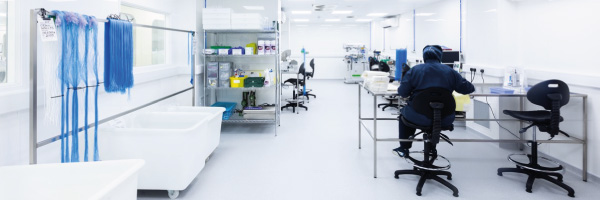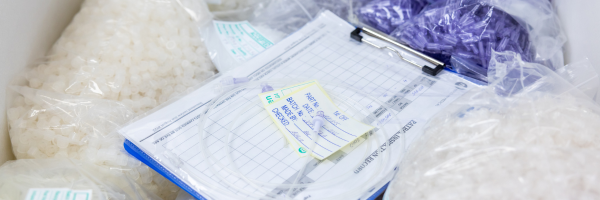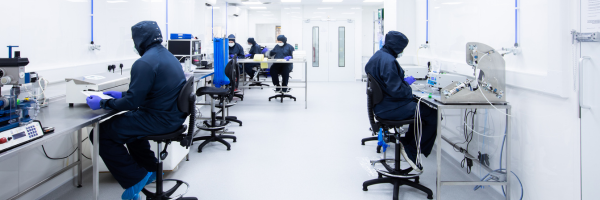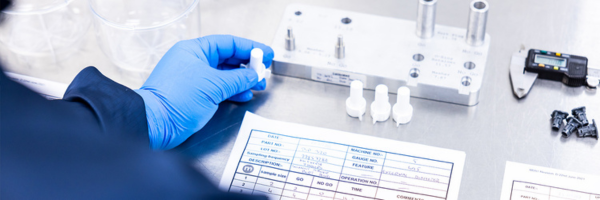What is a cleanroom and what is it used for?
A cleanroom is a highly controlled environment which has been specifically designed to reduce particulate contamination, as well as to control pressure, temperature, humidity and personnel access. Regular cleaning and microbiological testing of the cleanroom is also required to ensure the production of safe and contaminant-free medical devices.
In this blog, we explore eight specific features of cleanrooms and cleanroom technology that help keep medical devices clean, fostering trust and confidence in the products delivered to healthcare providers and patients.
8 Key features of a cleanroom
1. High Filtration Systems
Cleanrooms are equipped with advanced air filtration systems that continually purify the air. High-efficiency particulate air (HEPA) filters effectively trap airborne particles, including dust, bacteria and microorganisms, helping to maintain a clean environment essential for medical device manufacturing.
2. Controlled Airflow
Unidirectional airflow is a key feature in cleanrooms, preventing the recirculation of contaminants. The controlled direction of air ensures that particles and pollutants are directed away from critical workspaces, reducing the risk of cross-contamination.
3. Stringent Monitoring and Control
Cleanrooms are subject to strict monitoring and control measures to maintain optimal cleanliness levels. Regular checks for temperature, humidity, airborne particle counts and pressure differentials help ensure that cleanroom conditions continue to meet the required standards.
4. Appropriate Cleanroom Garments
Personnel working within cleanrooms wear specialised cleanroom garments, including gowns, masks, gloves and shoe covers, to minimise the introduction of contaminants. These garments are designed to prevent the shedding of particles while providing maximum cleanliness and hygiene.
5. Surface Decontamination
Cleanroom surfaces, including walls, floors and equipment, undergo regular and thorough decontamination procedures. Controlled cleaning agents and cleaning protocols are employed to prevent the build-up of microbial contamination.
6. Controlled Entry and Exit Procedures
Cleanrooms implement strict protocols for personnel entering and exiting the facility. Airlocks and gowning rooms are utilised to limit the exposure of the cleanroom to external pollutants. Visitors and staff must follow specific hygiene practices to maintain cleanliness.
7. Material Compatibility
Cleanroom materials, equipment and tools must be compatible with the controlled environment. Non-porous, easy-to-clean surfaces are preferred to minimise the potential for particle retention and microbial growth.
8. Employee Training and Hygiene
Personnel working in cleanrooms undergo extensive training on cleanroom protocols and hygiene practices. Proper handwashing, aseptic techniques and adherence to Standard Operating Procedures (SOPs) are vital to preventing contamination.
What defines a cleanroom – what is the difference between a cleanroom and a normal room?
Unlike ordinary indoor spaces such as an airconditioned office, cleanroom environments must adhere to rigid standards set by the International Organisation for Standardisation. In order to be classified as a ‘cleanroom’; at the bare minimum an environment must have a filtration system that filters to 0.5microns, at 3,520,000 particles or less per cubic metre. The better the level of filtration, the higher the class of cleanroom. Class 8 being the lowest grade and class 1 being the best class of cleanroom, with the highest level of filtration.
Cleanrooms play a pivotal role in healthcare
Through the integration of specialised features such as advanced filtration, controlled airflow, stringent monitoring, and proper employee training, cleanrooms create an environment where medical devices are produced with the highest levels of purity and safety.
As a medical device manufacturer, Meridian Medical places paramount importance on the implementation and maintenance of cleanrooms with state-of-the-art features. Our commitment to quality and cleanliness ensures that the medical devices we deliver are trustworthy, reliable, and capable of transforming healthcare worldwide.
Find out more about our purpose-built medical device cleanroom facilities, totalling almost 700m², entirely dedicated to the manufacturing, assembly and packaging of sterile and non-sterile disposable medical devices.
Discover how Meridian Medical can help you with your medical device manufacturer by getting in touch today. Fill out our online form or contact us on 01903 732344 or info@meridian-medical.com.
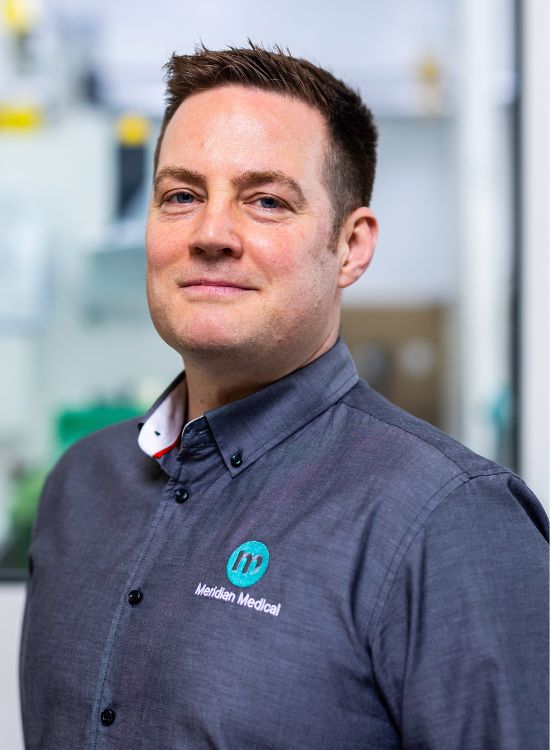
Author: James Fenton, Managing Director
James Fenton, Managing Director of Meridian Medical since 2017, has over 20 years of industry experience. He has been pivotal in developing and producing over 500 types of single-use medical devices, including CE-marked class 2 and 3 devices. With a strong focus on business strategy, project management and customer support, James ensures Meridian Medical's agility and innovation. His expertise is backed by qualifications in Business Studies and Medical Process and Equipment Validation, plus extensive industry training. James's insights into the industry that he has dedicated his entire career to provide a bank of invaluable information aimed at increasing knowledge of and driving advancements in medical device manufacturing.

